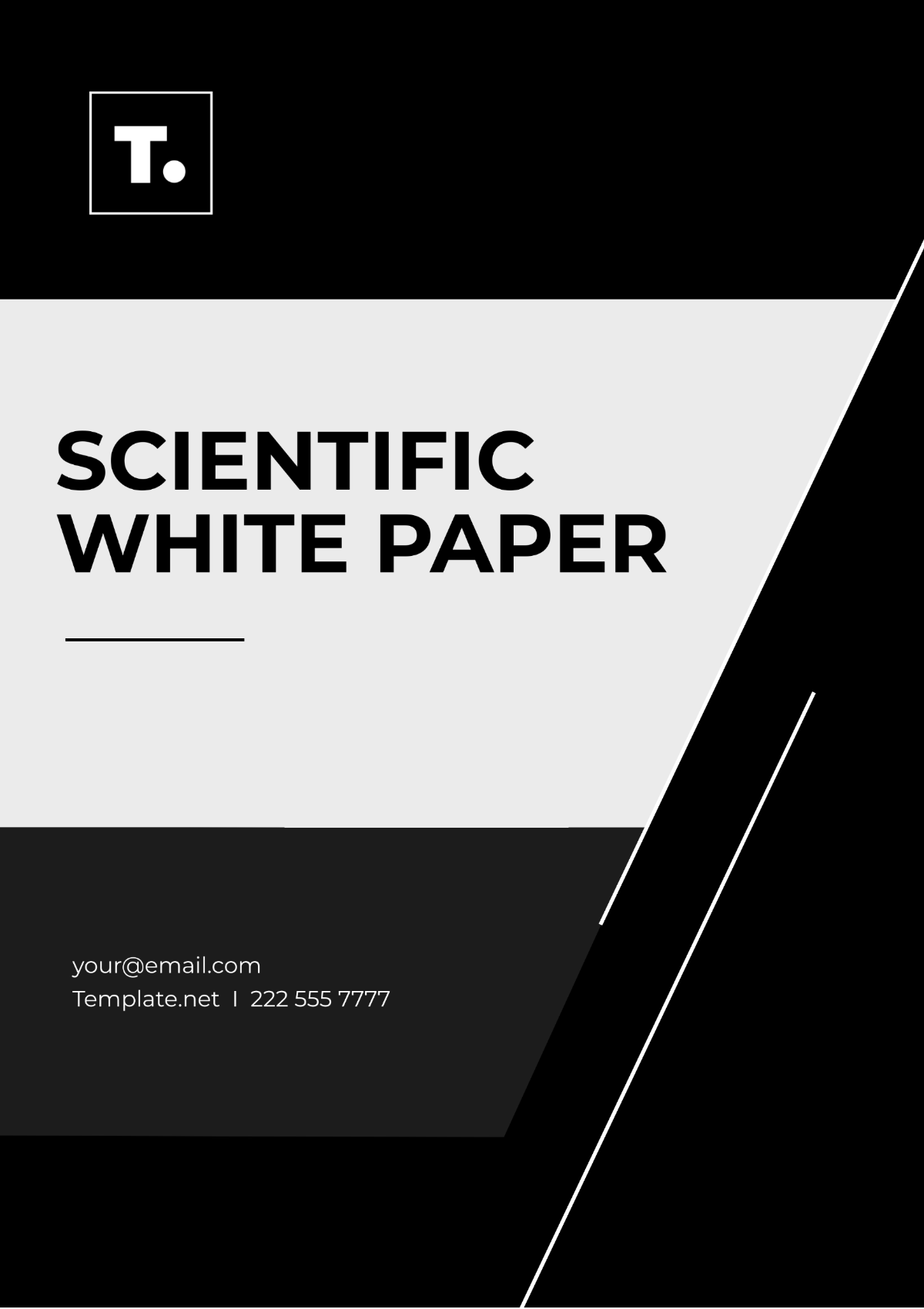Free Scientific White Paper

I. Executive Summary
This white paper serves as a comprehensive guide for researchers and scientists in effectively presenting their research findings. It outlines key strategies, best practices, and common pitfalls to avoid when communicating research results to various audiences. By following the recommendations outlined in this paper, researchers can enhance the impact and visibility of their work, fostering greater understanding and engagement within the scientific community and beyond.
II. Introduction
Presenting research findings is a critical aspect of the scientific process, allowing researchers to share their discoveries, insights, and conclusions with the broader community. However, effectively communicating complex scientific information can be challenging, requiring careful consideration of audience, format, and messaging. In this white paper, we provide guidance and practical tips for researchers and scientists to enhance the clarity, coherence, and impact of their presentations.
III. Key Strategies for Effective Presentation
A. Know Your Audience
Tailor your presentation to the specific needs, interests, and knowledge level of your audience. Whether addressing fellow researchers, policymakers, industry professionals, or the general public, adapt your language, terminology, and examples accordingly.
B. Structure Your Presentation
Organize your presentation in a logical and coherent manner, following a clear structure that includes an introduction, methods, results, discussion, and conclusion. Use headings, subheadings, and visual aids to guide the audience through your presentation.
C. Highlight Key Findings
Clearly articulate the key findings of your research, emphasizing their significance, relevance, and implications. Use visual aids such as graphs, charts, and tables to illustrate key data points and trends.
D. Provide Context
Situate your research within the broader context of existing literature, theories, and debates. Highlight the novelty, innovation, or contributions of your work, and discuss how it builds upon or challenges previous research.
E. Engage Your Audience
Foster active engagement and participation from your audience by encouraging questions, discussion, and feedback. Be prepared to clarify complex concepts, address uncertainties, and respond to criticism in a constructive manner.
"Scientific research is one of the most exciting and rewarding of occupations." —Frederick Sanger
IV. Common Pitfalls to Avoid
A. Overloading with Information
Avoid overwhelming your audience with excessive detail or technical jargon. Focus on conveying the most important findings and insights, and provide supplementary materials for those interested in more depth.
B. Lack of Clarity and Coherence
Ensure that your presentation is well-organized, coherent, and easy to follow. Use clear and concise language, and avoid ambiguity or ambiguity in your explanations.
C. Ignoring Visual Communication
Visual aids are powerful tools for enhancing comprehension and retention of information. Use them strategically to complement your verbal presentation, but avoid cluttering slides with too much information or distracting graphics.
D. Failure to Practice and Prepare
Practice your presentation multiple times to ensure smooth delivery and timing. Familiarize yourself with the venue, equipment, and logistics of the presentation, and anticipate potential questions or challenges.
E. Lack of Audience Engagement
Foster a dynamic and interactive presentation environment by actively engaging with your audience. Encourage questions, facilitate discussions, and seek feedback to promote greater understanding and dialogue.
"It is through science that we prove, but through intuition that we discover." —Henri Poincare
V. Conclusion

In conclusion, effectively presenting research findings is essential for advancing scientific knowledge, fostering collaboration, and driving positive societal impact. By following the key strategies and avoiding common pitfalls outlined in this white paper, researchers and scientists can enhance the clarity, coherence, and impact of their presentations, ultimately contributing to the advancement of science and innovation.
VI. References
Smith, J. (2019). The Craft of Scientific Presentations: Critical Steps to Succeed and Critical Errors to Avoid. Springer.
Alley, M. (2013). The Craft of Scientific Writing. Springer.
Day, R. A., & Gastel, B. (2011). How to Write and Publish a Scientific Paper. Greenwood.
Council of Science Editors. (2014). Scientific Style and Format: The CSE Manual for Authors, Editors, and Publishers. University of Chicago Press.
American Psychological Association. (2020). Publication Manual of the American Psychological Association (7th ed.). American Psychological Association.
- 100% Customizable, free editor
- Access 1 Million+ Templates, photo’s & graphics
- Download or share as a template
- Click and replace photos, graphics, text, backgrounds
- Resize, crop, AI write & more
- Access advanced editor
Maximize the impact of your scientific research with Template.net's Scientific White Paper Template. This template offers a seamless blend of professionalism and innovation. Customizable and editable, it empowers you to present your findings with precision and clarity. Utilize the included AI Editor Tool to streamline your workflow and produce polished white papers.






























